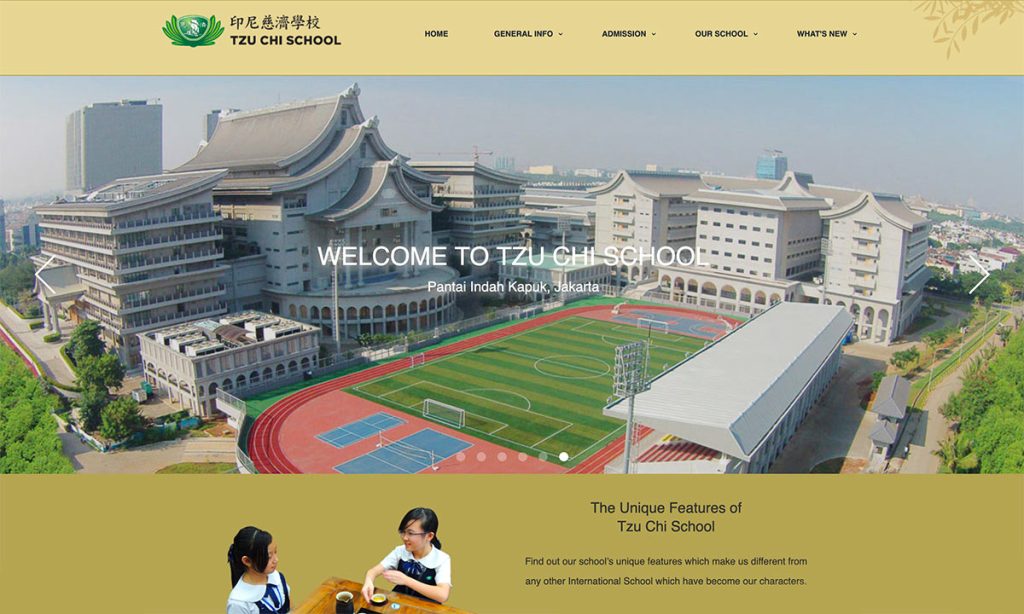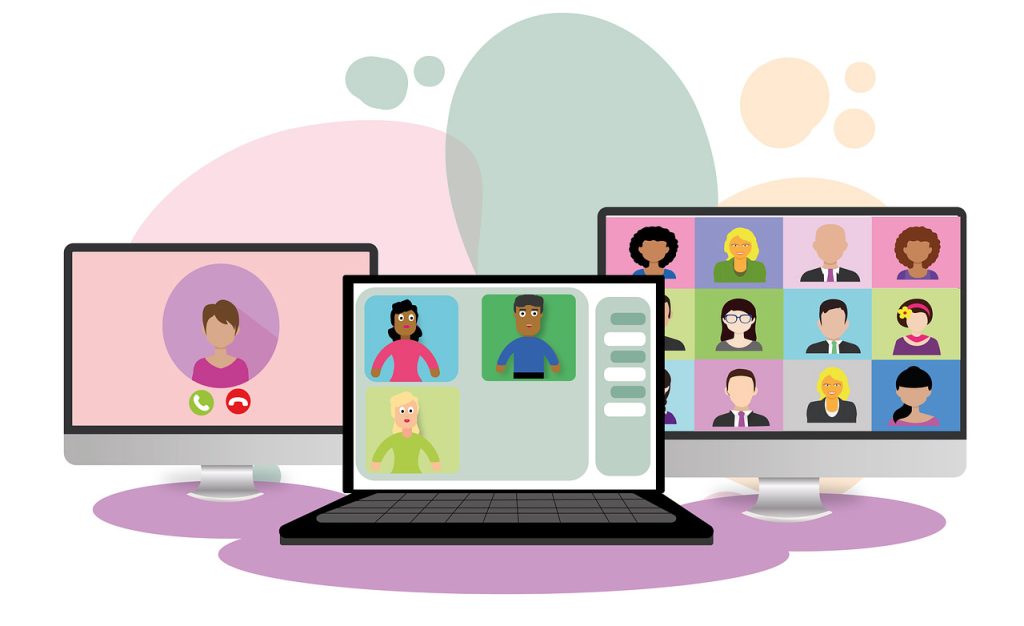
For the foreseeable future, the year of 2020 will be best known as the year that the whole world ground to a standstill; the year lost to COVID-19. However, decades from now, the year could be remembered as the year that global education was forever revolutionized.
In the beginning of March, 2020, when the lockdown in Jakarta, Indonesia was first announced, I entered into online learning with a number of assumptions. To begin with, I expected that students would transition to online learning more smoothly than their teachers. I also believed that they would, at least to begin with, enjoy this paradigm shift in learning; the freedom of being at home, reduced contact time, and small breaks between classes. I expected it to be something that the modern student would relish. While I can’t say I was entirely wrong by what followed, it should suffice to say that I was shocked by the reality.

Having now experienced – at the time of writing – six months of online learning, I have identified three areas which I would like to reflect upon. First, I would like to look at the application of education technology (EdTech) in my classroom, and identify how it was, on occasion, applied well, or, in some instances; poorly. Secondly, I intend to reflect on the assumption that modern students are particularly adept at understanding new technology, and the support they needed to thrive in distance learning. Finally, I want to look at how maintaining good connectivity and empathy can help maintain a positive student mindset during these troubling times.
To begin, I should highlight that I teach at a large and well-funded high school – Tzu Chi School in Jakarta, Indonesia. Tzu Chi School partially follows the International Baccalaureate continuum – Middle Years Program (MYP) and Diploma Program (DP) – and it primarily caters for affluent national students. I have the roles of Language Acquisition Teacher in English for Grade 10, and Theory of Knowledge Teacher for Grades 11 and 12. For the purposes of this reflection, I will focus on my experiences in Language Acquisition.

To add further context, it should be noted that; Tzu Chi School was proactive and preemptive in its handling of the transition to Home Based Learning. It provided compulsorily training for all teachers in the use of Google Suite pre-transition and Tzu Chi School management was also highly supportive of teachers experimenting with EdTech in their classrooms. It made for a highly innovative and reassuring environment in which teachers could excel. As part of the adaptation, class periods were cut down to a two-thirds the original time and Tzu Chi School management has also encouraged frequent ‘off – curriculum’ lessons to maintain student spirit and well-being during Online Learning.
EdTech in The Classroom
When Online Learning first started, through the use of the Google Classroom Learning Management System (LMS) and the rest of Google Suite, my classes reflected my typical classes in the traditional classroom. My ‘classroom’ was a Google Meet and work was assigned and collected through Google Classroom. It is clear, now, that this initial period of hybrid learning – essentially traditional learning facilitated in a virtual manner – was a necessary adaptation process enabling the students and myself to familiarize ourselves with the ‘new normal’ and the systems there to aid us.
After two to three weeks of hybrid learning, it was clear that a new approach was required. Students were disconnecting from this traditional format expressed in a virtual manner. It was at this point that I really started to look into different pieces of EdTech. The one piece which immediately caught my attention was FlipGrid – an audio-visual recording website, where students create videos in response to a prompt. This would lead to a reduction in writing or typing and the creative aspect to it was something which I believed would engage my students in a very real way. However, upon trialing it with my students, the platform did not inspire and engage, at all, in the ways I had envisioned.
Having since had the time to reflect on this and perform my own research on the matter, I have come to a few conclusions regarding this initial failure. Through some research into the technology application framework known as Substitution, Augmentation, Modification, and Redefinition (SAMR)(Schoology, 2017), I realized that I had rushed my use of FlipGrid in the classroom.
My aim in adopting FlipGrid to be a part of my ‘teacher’s toolkit’ was to bring a sense of newness to my online classes. However, when I truly reflected on my use of application, it became clear that I was simply substituting my traditional use of a pen or word document for this piece of EdTech. I wasn’t really doing anything new in my class, simply repackaging the original way of doing the work. From this, I learnt that, while there is nothing wrong with the use of tech as a substitution, more often than not, the original methods are often just as valuable, if not more. If I wanted to truly inspire and engage my students, I would have to look at different part of the SAMR framework.
It was when I started looking how EdTech could augment, modify or redefine my learning engagements, that I started to see more engagement from my students. In more recent times, I’ve used this approach to help me determine that Microsoft OneNote would fulfil a useful role in my class. Far from a simple substitution for a traditional notebook and textbook, OneNote augments my assignments by essentially being a virtual textbook, allowing me to bring together all manner of different content for students to work on and through, and keeping it all in one place.
While I have to say the addition of Microsoft OneNote has been one of value, introducing it to students and encouraging them to learn the program was a challenge. This brings me to the next point of reflection; challenging the assumption that modern students are capable of grasping new technology with ease.
The Modern Student Stereotype
One of the biggest, and most invalid, assumptions I had upon entering online learning was that students would gain mastery of EdTech quicker than their teachers. At this point, I would reiterate that my students were high school students and had been using technology, in various forms, for the entirety of their lives. It was a natural thought that students would be used to engaging with new applications and would be able to quickly grasp the interaction the basics or essential when interacting with new pieces of EdTech. It was wrong.
Upon further reflection of my first forays with FlipGrid, students were reluctant to engage with much of the application’s more creative features. Since then, having provided appropriate tutorials and other teachers have also encouraged its use in their classes, students have become more open to using the more creative controls at their disposal. Key, though, to this increased ease of use was a better understanding of what was required and how it could be achieved.
When I first started using FlipGrid, I offered very little advice on what tools they could use and how they should use them, other than simply asking students to complete an oral assignment and intending for their creativity to take over. I didn’t incorporate any additional requirements, which may have augmented or modified the task, instead I left it to the students’ imagination and ability to come to their own understanding of the application. I didn’t set extra expectations or give them any tutorials to facilitate their use of the app.
During this reflection process, I have come to realize by that by not providing this level of tutorial, I was not ensuring that my students’ basic needs were met. When met with something new, a level of anxiety can be brought on by the change incurred (Haas, 2012). Students may normally be able to rise about this level of anxiety to learn the tech with ease, but during the period of COVID-19 and the uncertainty that came with it, anxiety amongst us all would be higher than ever. Now, when considering Maslow’s Hierarchy of Needs, it can be seen that for students to be able to successfully create and articulate, their lower basic, safety needs must be met. By failing to provide adequate tutorials for my students in the use of this new piece of EdTech, I potentially increased their level of anxiety, and made them unable to operate at the level of self-actualization.
To move forward, I realized that I had to provide explicit and easy to follow tutorials for my students to help guide them through the process of using new EdTech. To that effect, when introducing my students to the new platform of Microsoft OneNote, I made sure to create short tutorial videos which students could choose to watch whenever they were required to interact with the system in a new way. I believe this facilitated a much more enthusiastic and complete acceptance of this new platform.
 Fulfilling A Student’s Need for Connection
Fulfilling A Student’s Need for Connection
As humans, we tend to be social creatures. One of the hardest aspects of the online learning process, brought on by COVID-19, was students’ inability to connect and socialize with their friends. During online classes, I became quickly aware of students’ enthusiasm when working in a group – especially after weeks of online classes turned into months.
Some of the best learning experiences came about from my students working together in groups. Reflecting on this now, and having just consulted Maslow’s Hierarchy of Needs, a potential reason for this becomes apparent. Working in a group to create a piece of work has fulfilled the base psychological need of belongingness – to have friends and connect with them.
Considering this, and my two previous discussions on the use of EdTech in the classroom, I believe that as teachers we should be focusing on integrating technology in the classroom which further enhances connectivity between people – especially that which can provide a social link between students. This is not only to satisfy their psychological needs to perform better in class, but as a way of maintaining their own mental health, and to reduce any negative mental affects that this trying period may have on then.
Therefore, I would suggest that teachers’ fundamental question when deciding on what to do, or what new piece of technology to introduce into their classrooms should be: “how could this make my students feel more connected to each other?” From there, the main goal should be how can plans be adapted to facilitate this greater level of connection.
To summarize, this piece of reflective writing has covered three areas pertaining to online learning; the use of EdTech in the classroom; students’ ability to adapt to new EdTech, and ensuring that students can have a feeling of connectedness with each other. Following this brief reflection, I have created for myself a brief framework to apply when considering the introduction of new EdTech in my classroom, it consists of four questions. 1. Based on the SAMR Framework, how will this piece of EdTech change my online learning activities? 2. What support will my students need to be able to use it effectively? 3. Will this increase the feeling of connectedness between my students? 4. What application will this piece of EdTech have in a classroom post-COVID-19?
Based on my experiences in class, and the reflections done within this paper, I believe that this 4-question framework will promote a clearer picture of the role that a piece of EdTech would perform in a classroom and how to promote its acceptance and uptake by students in an enthusiastic manner. Finally, the framework also helps to focus on a context outside of the current situation and see if the EdTech in question would really have any place in future, post COVID-19, lessons. In the interest of changing the face of education, I believe that this is an essential question to be asking, especially if we are to achieve the potential revolutionization of education that this situation could promote.
Peter J. Whitfield
Tzu Chi School, Jakarta, Indonesia
Peter teaches at Tzu Chi School, Jakarta, Indonesia – an International Baccalaureate (IB) World School. The programs he is responsible for teaching are Language Acquisition: English in the school’s Middle Years Program (MYP) and Theory of Knowledge in the Diploma Program (DP). He teaches over 150 students between the ages of 15 and 18.
References:
Haas, S. (2012). How to manage the anxiety that comes with change. Retrieved 30 August 2020, from https://www.psychologytoday.com/us/blog/prescriptions-life/201201/how-manage-the-anxiety-comes-change
Mcleod, S. (2020). Maslow’s Hierarchy of Needs. Retrieved 30 August 2020, from https://www.simplypsychology.org/maslow.html#:~:text=Maslow’s%20hierarchy%20of%20needs%20is,hierarchical%20levels%20within%20a%20pyramid.&text=From%20the%20bottom%20of%20the,esteem%2C%20and%20self%2Dactualization.
Schoology. (2017). SAMR model: A practical guide for EdTech integration. Retrieved 7 July 2022, from https://www.powerschool.com/blog/samr-model-a-practical-guide-for-k-12-classroom-technology-integration/


